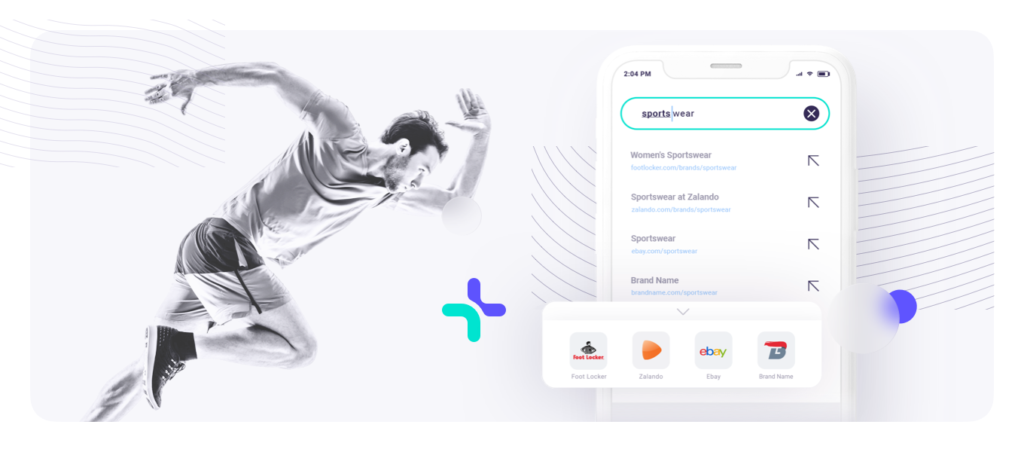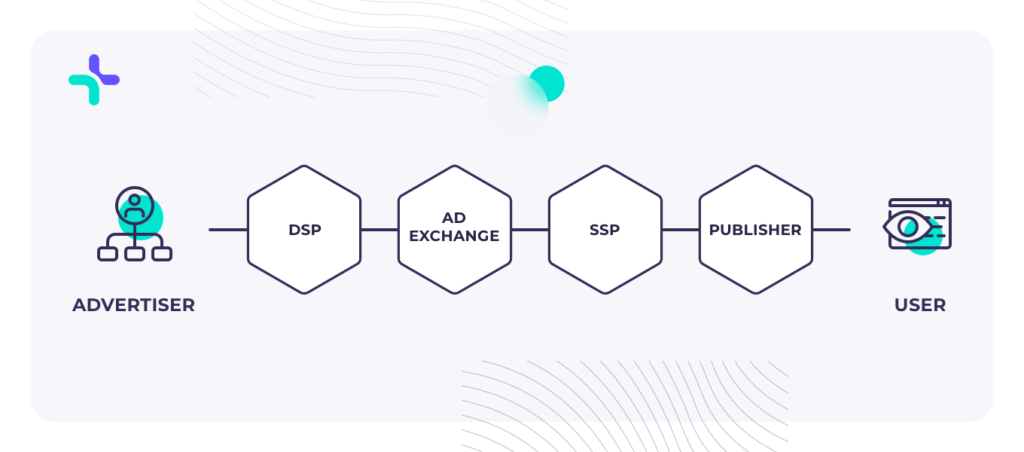Digital advertising encompasses a wide range of advertising methods. Some are interactive, some static, animated, free, paid, auto-playing, in-text, intrusive, or intent-based. There are plenty of methods of increasing traffic coming to your brand.
Each digital marketing method has its perks, and if you combine that with a clear outline of your marketing strategy, you have a two-step recipe for growth. However, opting for popular solutions puts your brand up against a very saturated market. And it might seem like just about anything in terms of advertising has been done already. But some solutions, albeit popular, remain underutilized. And that’s exactly what can help you grow your brand.
The bravest attempts at pioneering in advertising, such as Uber’s clever drone campaign, have left the world speechless. But paving the way with extravagant campaigns is unaffordable or inefficient for most brands. Uber’s campaign, although it was newsworthy and went viral, was also considered too much.
On the other side of the spectrum are the time-tested solutions. They’ve been here for nearly two decades, and what they have in common is that people either grew to accept them or hate them. The percentage of US users using an adblocker grew by 72% since 2014. Also, a recent study from HubSpot revealed that the omnipresent pop-up ads are actually the most hated ad format. Pre or mid-roll video ads were a close second with 100% of consumers skipping such ads whenever possible. Invasiveness and excessive frequency were also cited as one of the things most likely to turn the sentiment against the brand to negative.
Another study quoted modal, intra-content, and autoplay ads as the most hated. Deceptive links made the top of the list as well. The common pattern is – if the ad is begging for attention, it’s not likely to get it. It’s just going to build brand resentment.
Similarly, looking for unknown and unique ways of promoting your brand can easily backfire. Experimental ad placements on gaming consoles, smart fridges, smart TVs, and even space satellites are a hot topic, but they’re not exactly painted in the best light. In fact, these formats have not yet reached the status of popularity and there are already solutions for blocking them.
But we’re not here to tell you what ads to avoid, we’re here to bring your attention to the underutilized ad formats with potential. They often have proven track records of bringing solid results but they’re not overused (yet!).
Let’s take a look at the 7 underutilized ways of driving traffic to your website.
1. Contextual advertising
Contextual advertising is currently the top contender to take the place of overall best ad format. Since third-party cookies are becoming more and more scarce, cookieless ad formats are the future of privacy-first advertising. Contextual targeting is promising not only a similar level of performance but also a targeting method that is not as intrusive and meets the highest standards of brand safety. Consumer attitudes towards contextual personalization are most favorable in comparison with other types of personalization, such as behavioral, retargeting, demographic, etc.
Driving traffic to your brand via contextual advertising ensures that ads will be displayed in a relevant context. Such ad formats include (but are not limited to) in-app advertising and search traffic, especially from alternative search engines.
That’s why in-app ads, being a prime example of contextual ads, are considered brand-safe, because the environment of the app is highly controlled. Apps are also preferred over mobile sites due to better user experience, speed, and extra features. 58% of millennials prefer shopping through apps because of the streamlined process and pre-saved data. Apps are simply more engaging. And moving your online advertising into a controlled in-app shopping experience with keyword targeting is a good way to drive more conversions. An example of an in-app ad provider is AdColony but you can find other DSPs offering in-app mobile amongst other ad formats.
Another example of brand-safe advertising are contextual search ads. This method of direct-to-customer advertising can be provided by Google Search, Brave In-Browser Ads, but also NewProgrammatic solutions. At NewProgrammatic, we offer two ad formats based on user intent – whenever users start typing something into a search bar, they’re immediately provided with thematic suggestions. Such precise targeting is made possible by close relationships with trusted publishers like mobile keyword apps, search engines, or similar.

2. Social ads
Social ads might be a surprise on a list of underutilized ad formats, however, the social space is currently so vast, there are still apps and sites that haven’t been fully exploited. Of course, Google Ads and Facebook ads will not be discussed here. The ‘duopoly’ already dominates the ad tech industry with a combined share of close to 80% of the £14bn digital advertising market.
Social media marketing, however, is not limited to the giants. Many other platforms offer advertising placements and unique platform-native ad formats. Snapchat, Twitter, LinkedIn, and Instagram are full of video ads, rolls, brand-made filters, interactive spots, and other creative solutions.
Let’s take a look at some of the underappreciated social media platforms with solid advertising options:
Pinterest Ads
Pinterest is a platform where users can save pictures and videos on their dashboards. It’s the most common platform for grouping ideas and inspiration. Pinterest’s audience is made up of 70% of women, and 85% of usage occurs on mobile devices. Pinterest Ads look like pins, so they blend in seamlessly with the rest of the content.
The available options include: static ads, video ads, install ads, carousel ads, shopping ads, and collection ads. With Pinterest, you can target keywords and interests, demographics, audience lists, and specific ad placements.
Quora Ads
Quora is a forum-like platform offering the community to ask and answer each other’s questions. The platform has a 43/57 female to male audience ratio, and mobile is the audience segment that generates the most clicks on Quora Ads. What’s more interesting is that 65% of Quora users have a college degree and 54% of adult users report a yearly income of $100k or more.
Quora Ads are based on contextual targeting or behavioral targeting. The ads are placed amongst user-generated responses to questions and can be seen as topically related content. Quora ads are intent-based and similar to Google Ads with the advantage of being a less saturated platform.
TikTok Ads
TikTok is a video-sharing platform that focuses on social networking through sharing short videos. The platform has only been established in 2016 but the user base has already reached nearly 700 million monthly active users. Also, 60% of TikTok’s worldwide audience are between 25 to 44 years old, with US statistics alone learning towards the younger demographic with 69% of users being between 13 and 24 years old.
TikTok ads come in the form of videos that blend in with the rest of the content. The ads can be placed on various pages (e.g. in-feed or details) and the supported targeting includes audience, demographics, interests and behaviors, as well as detailed device segmentation.
3. Real-time bidding (RTB) Advertising
Real-time bidding is actually a mechanism that enables programmatic mass advertising via ad exchange platforms combining both demand-side (DSP) and supply-side platforms (SSPs). Ads can be bought by impression or click in real-time so there is no need for a direct relationship between the advertiser and the publisher. In fact, platforms based on real-time bidding are often self-served and have an array of targeting options to place bids on.

Some examples of RTB-based programmatic ad formats are push notifications or domain redirects.
Push notifications can drive traffic to your brand by appearing directly on user devices. Push ads are most popular on Android mobile devices thanks to their native appearance; however, you can also display push notifications on desktop devices and iOS mobile devices thanks to the in-page push variant. Push ads are extremely cheap in comparison to other brand-suitable marketing formats and they can instantly reach the highest volumes of traffic.
Push ads audience consists of users who subscribe to receive notifications from websites they are interested in. Ad exchanges group them into audiences that are most likely to display interest in a certain topic (e.g. travel, education, or e-commerce); but you can also choose to target all of the available volumes in a particular location to reach the widest audience.
Opt-in rates for push notifications amount to roughly 81% on Android devices and 51% on iOS devices. Open rates differ across the industries but the overall medium open rate for iOS is 3.4% and 4.6% for Android. Plain and generic push notifications are also not the preferred medium of promotion and there’s a much higher likelihood of success with optimized campaigns.
Emojis (20%), rich formats (25%), tailored send times (40%), advanced targeting (threefold), and personalization (fourfold) can all improve reaction rates.
Domain redirects, on the other hand, allow you to bid on misspelled URLs – after entering such a URL in the search bar, a user would be redirected to your chosen destination. This type of traffic is also known as parked domain traffic or zero-click traffic. It is another cheap method of driving traffic to your website based on search intent.
For example, if someone looking for a particular domain, let’s say, a store with cocktail dresses misspells the URL of the site, you can bid on that exact misspelling and lead them straight to your brand (presumably also selling cocktail dresses). The targeting options are based on keyword targeting — brand to brand or generic. You can also segment your audience based on other parameters such as a device used or location depending on what the ad exchange platform has to offer.
| Benefits of RTB | Drawbacks of RTB |
| – Huge volumes of traffic – Cheap cost – Audience segmentation – Non-intrusive – Efficient – Wide reach with low effort – Variety of SSPs to choose from | – Imprecise targeting – Need to narrow down the audience by trial and error – Overused by affiliate marketers – Susceptible to bot traffic – Medium standard of brand safety |
4. Augmented reality ads
Augmented reality has been a growing trend in the advertising industry. It might also be one of the most creative and engaging ways of advertising.
But what’s the use of augmented reality in advertising? It’s simple – it provides an additional layer to a physical experience. Some notable examples of applying AR to digital marketing are: visualizing the view from stadium seats before purchasing, virtually trying on cosmetics, clothes or accessories, and decorating your home through an IKEA app.
But that’s not all. Augmented reality has made some unforgettable advertising campaigns in the public space as well. Bus stops seem to be the objects most easily adjustable for an augmented reality experience. That’s why campaigns like Pepsi’s Sci-Fi experience went viral worldwide and brought an increase in Pepsi Max sales 35% year on year (YoY) for the month the campaign was live.
Augmented reality ads, however, cannot be purchased from a programmatic advertising solution. They are provided by creative agencies such as Grand Visual and can cost hundreds of thousands of dollars and take years to plan and execute.
5. Help a reporter out – HARO
Volunteering your expert knowledge to reporters can be a great way to put your company out there with very little effort. HARO is a special system for journalists to submit requests for expert insights about a certain subject. On the other end of that system, there are professionals and brand representatives who possess expert knowledge on certain subjects.
While signing up for HARO, you can specify exactly what is your area of expertise. Then, you will receive multiple requests a day and it will be up to you to pick them, get in touch, and discuss what you can offer. Getting featured in a story can not only increase your website traffic but also provide SEO benefits in the form of a quality backlink. There are some things to remember as HARO can be rather competitive:
- Be quick – the requests are sent out in the form of mass-mailing and there can be hundreds of brand representatives with relevant experience ready to pitch their brand.
- Be persistent – for the same reason as above, it might take some time for you to be chosen as the expert that receives recognition.
- Be honest – only pitch if your expertise is exactly what’s needed. HARO is a system for reporters to find experts and you offering inapplicable knowledge is only going to waste everyone’s time.
In short, HARO can be a great free method of gaining and maintaining PR. If your pitch is good enough and you get contacted by a reporter from a known site, you get the kind of exposure you would otherwise have to pay hundreds of dollars for.
6. Content marketing
If you’re wondering why content marketing is on the list of underutilized ways of driving traffic to your brand, it’s because there is a lot more to it than first meets the eye. Content marketing is all about attracting customers to your brand with content. You can have an informative blog and share insightful social posts but you can also go one step further and employ some of the underused tactics. Let us show you two note-worthy options.
Newsjacking
Newsjacking is the practice of capitalizing on popular news stories to drive traffic to your own site. While the name of that practice might suggest shady activities, when done right, newsjacking can be beneficial from the PR standpoint and can generate organic traffic for weeks to come.
While the simplest of newsjacking would be to spin an angle on a popular news story to make it relevant to your industry, or sharing your commentary as an expert, there are more creative ways to go about it.
Have you heard about McDonald’s losing their Big Mac trademark in Europe? When Burger King Sweden heard about it, they decided to exploit that to their advantage by poking a little fun and naming their sandwiches ‘Big Mac-ish but flame-grilled of course’ or ‘Like a Big Mac but actually big’.
Nonetheless, stealing another’s brand’s spotlight is not a necessary SEO technique. Content marketing entails not only search engine optimization but also gaining referral traffic from sources such as social media channels, an email marketing campaign, guest posting, or video marketing. While it might seem like you’d need a massive marketing department to handle all of that, there is a much better solution.
Recycling and repurposing content
Recycling and repurposing content can generate more traffic with only some additional effort. It also makes scaling your audience easier by reaching people on different platforms and in different ways. If not all channels align with your audience’s preferences, repurposing content is bound to reach the nooks and crannies and bring you more customers.
How can you repurpose and recycle content?
Assuming that you have the base – the first piece of content e.g. an article – you can now turn into a different kind of content:
- Illustrative video content,
- A podcast or a series of podcasts expanding on the subject,
- Various guest posts adding a host-specific angle,
- An infographic to be posted on social media,
- Gated content with the purpose of lead generation and/or exclusive content inside,
- A live webinar,
- Create a roundup or a learning hub,
- A course sharing your brand’s expertise on the subject,
- Organize a live event in collaboration with other experts.
Some Internet users prefer to read, others to listen, to watch, or to interact. And while your own site and social media might be one of the biggest players among the channels used in marketing in 2021, your SEO efforts should expand further beyond, preferably over most of the available channels.
Just remember that sharing old content with superficial updates is not content repurposing. While you can build off of something, old materials should not be reused just for the sake of attracting new customers without bringing any additional value.
7. Loyalty programs
Continuously attracting new customers to the brand still doesn’t fully account for its success. Generating more sales through search engine optimization, guest blogging, finding new sources of website traffic or paid advertising is not enough to guarantee prosperity. That’s because returning customers spend 67% more than new customers. What’s more, the cost of acquisition of a new customer is 5 to 10 times higher than selling to an existing customer.
Loyalty programs are on the rise and the reason is that they are effective. Despite the relatively saturated market (with more than 90% of companies having some sort of loyalty program), and the lesser importance of loyalty programs among younger generations, focusing on a program that maximizes value can bring a competitive advantage.
Loyalty programs can take many forms. However, the most common ones in the e-commerce world focus on gathering points either for the number of purchased items or for the money spent. What customers can receive in return is cashback, discounts, additional promotions, coupons, early access, free shipping, free products, or coupons for affiliated brands.
Additionally, providing an individualized loyalty program experience takes customer satisfaction to the next level. According to Bond’s Loyalty report, an increase in personalization of a program increases member satisfaction by over 6 times. That means that if the first-party data gathered on the user base is used in an efficient and relevant way, it can increase not only the feeling of brand affiliation but also customer retention and spend.
Overall, loyalty programs are a solid option for driving traffic to your brand but they do come with certain drawbacks as well.
| Benefits of loyalty programs | Disadvantages of loyalty programs |
| – Retain customers – Drive sales – Encourage higher spending – Gain insights into consumer data | – Rewarding customers that don’t bring overall profit for the brand – Costly rewards – Additional expenses connected to managing customer data |
Conclusions
Growing your business means expanding the reach of your advertising efforts. That can mean adding more advertising campaigns, cultivating mutually beneficial partnerships, targeting wider keywords, investing in search engine optimization, or buying into any of the ad tech industry’s trends.
However, just as much as going with tried and tested results might not work for your business, being innovative and thinking outside the box can bring varied results. Ultimately, it’s about what works best for your business, and the advertising market is filled with solutions that still have some untapped potential.
We talked about contextual targeting as the best brand-safe way to increase traffic to your website. We also mentioned social media ads as many brands don’t look past social media influencers and the ad tech duopoly – thus missing out on underused platforms that have the capability to generate significant traffic. Next, we brought your attention to real-time bidding (RTB), which despite being a very popular method, is often omitted from brands’ advertising strategies.
The list wouldn’t be complete without mentioning less conventional methods of gaining recognition such as helping out reporters or going big with augmented reality ads. Despite SEO ranking being on the mind of every website manager, strategies such as newsjacking or repurposing content can boost your brand’s organic traffic without taking a long time to complete. Lastly, loyalty programs are everywhere because they work. So, make yours count and keep the churn rate down.
Don’t know where to start? Start from the beginning!




